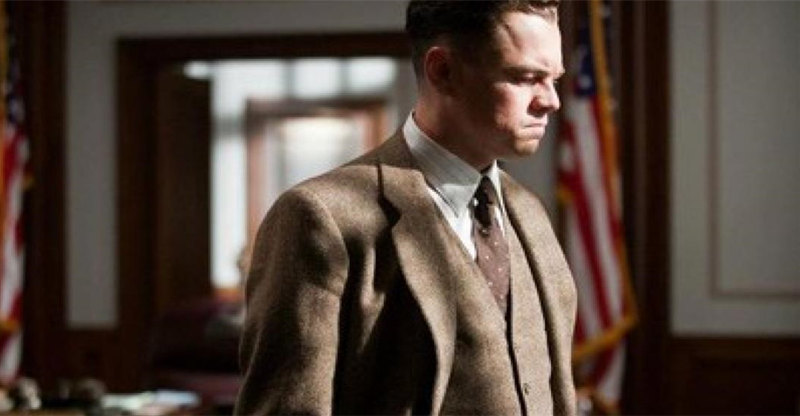By the end of the 1940s, the newfangled invention of television was just catching on. By the early 1950s, it had become such a threat to Hollywood that movie studios tried almost anything to lure audiences back into theaters. In some ways, this was good for the motion picture industry because it helped promote the adoption of such now-accepted conventions as widescreen and stereo. But, wide screens and stereo sound were not enough; these technical innovations needed massive stories to convey. Thus came the proliferation of the so-called “spectacular” from the mid fifties to the mid sixties, movies like “The Ten Commandments,” “Ben Hur,” “El Cid,” and “Spartacus.” By 1963 it was important to one-up anything that had gone before, and “Cleopatra” did just that, unfortunately unintentionally, as one of the biggest, longest, and costliest movies ever made.
Twentieth Century Home Entertainment present the film in an appropriately imposing, if somewhat extravagant, three-disc set. Whether it’s worth all the bother is open to question.
As far as I can tell, the film stays pretty close to known historical fact, with the possible exceptions of the queen’s final demise, a few character omissions, and some compression of time. It may also be the film’s undoing that it tries to cram the affairs of Cleopatra (Elizabeth Taylor) with two men, Julius Caesar (Rex Harrison) and Marc Antony (Richard Burton), into a single story, making it much too lengthy to sustain continued interest. Director Joseph L. Mankiewicz had originally envisioned two three-hour movies released six months apart, but Twentieth Century Fox studio boss Darryl F. Zanuck nixed the idea, wanting, instead, to capitalize immediately on the real-life romance of Taylor and Burton.
The finished product, trimmed to a little over 247 minutes, is still a good hour or more too long for a single sitting. Yet the 194-minute version, released to general distribution just after the film’s premiere, proved disjointed and confusing. Nothing about this picture seems to have gone right.
The story begins with the arrival of Caesar in Egypt in the year 48 B.C., at a time when the independent state of Egypt was a protectorate of Rome. Caesar is there in pursuit of his rival, Pompey, and to settle a dispute between Cleopatra and her brother Ptolemy over which of them should rule the kingdom, a clash that had spawned an Egyptian civil war. The Queen of the Nile makes a wonderful first entrance wrapped in a rug, a tiny bit of humor in an otherwise somber affair. She wants Caesar to put her on the throne and depose her brother. Caesar just wants to stop the squabbling and go home. He does put her on the throne, but she wants more. She wants Caesar himself and manages to seduce him in what seems like no time at all. She marries him in an Egyptian ceremony and has a child by him (which is still up to historical debate), much to the chagrin of Caesar’s first wife in Rome.
Then when Caesar brings Cleopatra back to Rome, the Queen enters the Roman Forum (in the movie three times the size of the real Forum, by the way, to make it even more impressive than it was) in one of the grandest spectacles ever to grace a movie screen, the queen herself riding atop a twenty-eight-foot sphinx. Anyway, Cleopatra soon has the Roman dictator thinking of kingship. The Roman senate is afraid of his hunger for power, and to protect the republic they murder him. So ends part one.
With her chance for world domination as the wife of Caesar ended, Cleopatra next seizes on the idea of seducing the second most powerful man in Rome, Marc Antony, Caesar’s best friend, and planting ambition in his mind. She gets him and his legions to declare her son by Caesar the rightful heir to the Roman Empire, and she persuades him to declare war on Rome. This time she succeeds only in getting Antony defeated and expediting his suicide. By the end of the film she’s had two of the most powerful men on the planet as lovers and failed with both of them. Not the best track record in the world. In addition to Taylor, Harrison, and Burton, you will find Roddy McDowall as Octavian (later known as Augustus), Julius’s successor to the dictatorship of Rome; Martin Landau as Rufio, the loyal right-hand man to Antony; Andrew Heir as Agrippa, the admiral of the Roman fleet; and Hume Cronyn as Sosigenes, the queen’s most-trusted counselor.
Over the years I’ve heard the pros and cons of this picture rage on. I’ve heard its defenders say it’s a lyrical epic and its detractors say it’s an epic mess. Certainly, the film suffers the obvious effects of long rewrites and excessive editing. In its existing state it is too long to sustain a cohesive narrative, instead appearing as a succession of attractive set pieces strung together with a good deal of talk. “Too many words,” says Caesar to Ptolemy’s tutor, and I agree. If the dialogue were in any way responsible for character development, it might have worked, but we learn everything we need to know about the three principal characters in the first ten minutes of meeting them, and they never change. For anyone seeking character growth or plot development, “Cleopatra” can be a frustrating experience.
The first part of the film, introducing us to Caesar and Cleopatra, is by far the best and most involving portion of the movie. Harrison is ceaselessly fascinating to watch, giving a commanding performance that resonates with the pompous echoes of his Professor Higgins. Burton was probably an even better actor than Harrison, but he is given less to work with. His Marc Antony is easily manipulated by the Egyptian temptress and turns into something of a jellyfish by the time he takes his own life. Ms. Taylor is the enigma. She is at once gorgeous and alluring, exposing a good deal of flesh along the way, yet abrasive and domineering as well. Beyond her physical perfection, one wonders what two otherwise reasonably intelligent men saw in so obvious, scheming, manipulative, and demanding a femme fatale. Well, one cannot argue with history, I suppose; both Caesar and Antony made fools of themselves over her, and Ms. Taylor plays her role as though born to it. Considering her own real love life, one could almost say she was, indeed, born to it.
However, “Cleopatra” was not the total failure it is sometimes purported to be. The public at the time generally loved not only the stars but the spectacular scenery, the lavish costumes, and the massive sets. (Cleopatra’s golden barge itself must have cost the filmmakers a king’s ransom.) What’s more, the film was nominated for nine Academy Awards, including Best Picture and Best Actor (Harrison). It won in four categories: Best Art Direction (John DeLuir), Best Cinematography (Leon Shamroy), Best Costume Design (Irene Sharaff, Vittorio Nino Novaresse, Renie), and Best Special Visual Effects (Emil Kosa, Jr.).
Video:
The video image quality needs to be as good as it can be to convey the opulence of the movie, and Fox’s THX-mastered transfer is mostly up to the task in this “Five-Star Collection” special edition. The screen size, originally filmed in a 2.20:1 ratio Todd-AO, shows up on a standard 4:3 ratio television in an anamorphic widescreen measuring approximately 2.10:1. The colors display an extraordinary richness and clarity, and the only thing to spoil the illusion is a modest but consistent shimmering of horizontal lines. This is especially observable in the many marble steps of various imperial buildings.
Audio:
The audio is provided via either Dolby Digital 5.1 or Dolby 2.0 Surround, and here the news is not quite so good. There is a wide stereo spread, and I liked the way voices could be followed across the sound stage. Plus one finds good bass, dynamics, and definition in DD 5.1. So far, that’s as good as can be expected from a film nearly forty years old. But the sound is also bright, hard, and edgy, particularly in the strings and brass, and it’s accompanied by some minor background noise. The rear channels are fed a small amount of ambient information, and I emphasize small.
Extras:
Discs one and two carry the film itself, accompanied by an optional audio commentary with Chris Mankiewicz and Tom Mankiewicz, sons of the director, star Martin Landau, and publicist Jack Brodsky. The two discs carry fifty-two scene selections between them, with English and French provided for spoken languages, English and Spanish for subtitles.
The bulk of the extras appear on disc three, which seems as I mentioned at the beginning, extravagant. After all, Warners managed to fit all of “Ben Hur” and its extras onto a single, dual-layered, dual-sided disc. Maybe the Fox producers felt that a three-disc set would better emphasize the sheer magnitude of “Cleopatra.” The disc’s main item is a two-hour documentary, “Cleopatra: The Film That Changed Hollywood.” It offers a fascinating look behind the scenes at the making of the movie and chronicles almost everything that could go wrong during production. What started out as a modestly priced historical drama soon escalated, for a variety of reasons, into an epic that almost bankrupted the studio. I was interested to learn, too, that Joan Collins originally had the lead, and that later Audrey Hepburn, Marilyn Monroe, and Sophia Loren were considered. Peter Finch was the initial Caesar and Stephen Boyd was Antony until production delays forced the actors to leave the film to meet other commitments. And, of course, the documentary reports on the then-scandalous off-screen romance between Taylor and Burton, both of whom were married to other people at the time. In addition, the third disc includes a featurette, “The Fourth Star of Cleopatra,” archival footage from the New York and Hollywood premieres, a still gallery of behind-the-scenes photos, costume sketches, concept art, and more.
Parting Shots:
“Cleopatra” has been called the most expensive film of all time. By today’s standards, its cost would be close to half a billion dollars. It has also been called the biggest flop of all time, which I think is a bit unfair. It is only a flop when compared to what it might have been and compared to what people expected from such an expensive project. It is overlong and sometimes tedious, to be sure, and it is far from anything like a screen classic. But, it still became one of the top box-office attractions of the 1960s, it still boasts some of the most visually stunning sets and costumes ever produced, and it still showcases the remarkable talents of Ms. Taylor, Mr. Harrison, and Mr. Burton.
It’s a beautiful film to look at, and DVD enables one to spread the two parts of the story over a couple of showings, coming close to fulfilling Mankiewicz’s intentions. “Cleopatra” is not required viewing by any means, nor is it the bomb it is sometimes made out to be (although Elizabeth Taylor is said to have hated it). Just have plenty of refreshments on hand and your finger on the pause button if you intend to sit through the whole thing at once.


